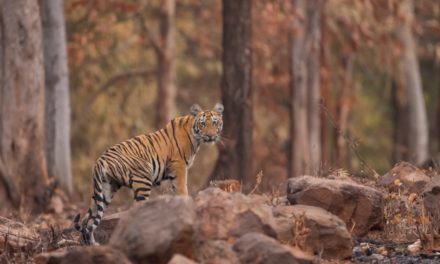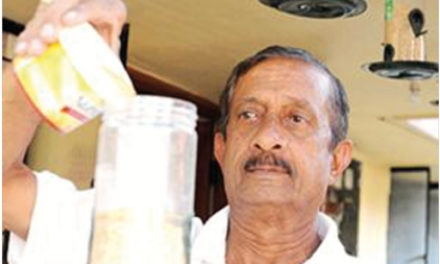
Sustainability….

What is it to conserve?
It is rather a way of life, how any living
thing being a part of nature strives towards
continuity of life itself. For Leibniz, the German thinker, continuity was God’s way of instantiating natural order; for contemporary scientists, it is simply nature’s way.
Whatever it is, Conserving life means conserving nature, without which ecosystems will fall apart and life becomes extinct. A biased portrayal of hierarchical food chains with humans at the top doesn’t really help to reinforce the connection that humankind as part of nature is supposed to
nurture nature and appreciate its fundamental workings. Considering human intelligence to be above all, everything else, it should actually play a pivotal role on what it is to be human. The truth is, it isn’t human intelligence that provides for
continuity or diversity within any population, but DNA. Besides, biotechnology can enhance any good work we do as far as conservation is
concerned, is a fact. Human superiority over
nature, its resources should extend to
conservation and not severance, domination and exploitation.
The world can’t forget Greenpeace activist from Micronesia Hayhow Daniel Nanoto. It was on July 26th, 1998 the National Coordinator in Defense
of the Mangroves in Ecuador was created and the communities of ancestral users of the
mangroves of Ecuador joined in a concerted
action to break down the walls of an illegal shrimp pond, one small step to halt the continued
expansion of shrimp farm ventures. Nanoto died of a heart attack while involved in a massive
protest action in Ecuador led by the
environmental organizations FUNDECOl
(Fundación de Defensa Ecológica), Ecuador and Greenpeace, International.
As a telling testament to this wasteful industry, there are over 250,000 ha of abandoned shrimp farms around the world. At what costs were 1
million ha of important, productive coastal
wetlands devastated for the sake of a luxury
seafood product!
In spite of the Mangrove Action Project (MAP) that has been working since 1992 to halt the
rampant destruction of the earth’s mangrove
forest wetlands threatened by unsustainable
development, clearing of mangroves continued, posing a serious threat to the future of life on this planet for several very relevant reasons. After the great Indian Ocean Tsunami of 2004, the word ‘mangrove’ did not sound foreign to our ears.
Then we learnt that, since the late 1950s, human beings have decimated the total of mangrove
forests by a third with the World Atlas of Mangroves in 2010 stating the decimation of mangroves
occur “four times faster” than land forestation
notwithstanding the heavy mangrove
reforestation since the tsunami. In Aceh, the
Indonesian province that bore the brunt of the 2004 impact losing 167,000 lives to a 20-metre wave, thousands of hectares are planted with mangroves hoping these plants will do their job if they are there. That is, absorb wave energy and dissipate tsunamis. Conserving mangroves is one in any portfolio of strategies to help corals
survive because Mangrove trees’ thickets of
stilt-like roots serve as a haven for corals,
according to a recent report in Biogeosciences.
The World Conservation Union and the U.N.
Development Program launched a US$62
million (euro48.83 million) mangrove conservation
plan in October 2006 called ‘Mangroves for the Future’ , a five-year project that funded
ecosystem restoration and sustainable
development in the countries affected by the
tsunami. How effectively or judiciously the million dollars were put to use is not worthy of research but the relevance of mangroves as nurturers and protectors is to be taken note of.
In today’s scenario of global warming, this
‘protector of shorelines’ could be our future
resource to sequester carbon dioxide from the atmosphere at significantly higher rates, per unit area, than terrestrial forests, in addition to being
a breeding ground and habitat to a variety of sea life of high commercial value. Of all the
biological carbon, also termed as ’green carbon’, captured in the world, over half (55%) is captured
by mangroves, sea grasses, salt marshes, and
other marine living organisms, which are also known more specifically as ’blue carbon’. When coastal ecosystems are degraded, lost or
converted to other land uses, the large stores of blue carbon in the soils are exposed and
released as CO2 into the atmosphere and/or
ocean. Current rates of loss of these eco-
systems may result in 0.15–1.02 billion tons of CO 2
released annually.
To conserve mangroves, one doesn’t need a
degree in environmental sciences from the world’s best educational Institutes or knowledge on the names and number of species. There are inspiring stories supporting this fact. Not long ago, in the sleepy village Pazhayangadi, Kerala there lived a farm worker named Kallen Pokkudan who had
formal education only till class II. This man
considered mangrove trees as jawans that
safeguard the earth from raging waters and
winds. It all started in 1989 when mangroves
weren’t the concern of any environmentalists
that this man carried a bag of seeds wherever
he went. Known as Kandal Pokkudan, he planted almost 1 lakh plants and fought a worthy battle till 2015. Strong is the doubt if anyone has taken on the mantle of Pokkudan.
Mariamma Kurien, also known as Kandal
Ammachi of the Cheppannakkari House in
Kumarakom, Kerala began her tryst with
mangroves 50 years back covering 0.24 ha of her land with a thick mangrove belt. Captivated by the architectural aspects of the mangrove that
underlie its industriousness, she planted and
nurtured mangroves until she passed away in 2009. Even decades ago, this ‘mother of
mangroves’ made sure that her family became aware of the importance of mangroves, when
nobody cared for a patch of swamp. Till 2004, Mariamma was just as anonymous as another
unsung hero. Post tsunami 2004 witnessed a huge rush of researchers, Government officials, media, and school children to see and learn the
importance of mangroves from her. Speaking about the once pristine Vembanad to hundreds of children assembled during the Wetland Festival
organized by ATREE, Mariamma shed tears. Such was her love for nature and commitment to
recreate and protect mangroves. What began as an initiative to protect her property near the
canal is being practiced as a way of life by many. Government projects in line with Mariamma’s
tryst with mangroves have been in full swing throughout Kerala. The recently announced
mangrove-belt which is to be implemented
under the National Rural Employment Guarantee
Scheme (NREGS) is to adorn the banks of all
major canals and streams that criss-cross
Kumarakom in addition to the bio-wall around the bird sanctuary. Mangrove hotspots coming up near a location close to the residence of late
Mariyamma Kurian is looked upon as a good omen by natives. According to her acquaintances, this woman cared for mangroves more than or as much as she did for her 11 children. Recognitions and awards from various forums did encourage this earth buddy and her idol Kallen Pokkudan calling on her helped her realize that she has fully lived her purpose, her dharma. Not just a handful, there are enough names to be reckoned with in this regard because people are very much aware an ocean only starts where mangroves grow. Without the ocean ecosystem, land temperatures would soar to 30 degrees higher than now.
Allaparthi Appa Rao of Repalle village in Guntur
district, Andhra University alumnus came to be called as the “Mangrove Man of India,” worked tirelessly from 2006-2012 with the local
community to restore over 11,000 hectares of deserted land and fish/shrimp ponds (that were encroachments on Krishna Wildlife Sanctuary
land) into secondary-growth mangroves.
Efforts of Mr. Appa Rao were documented by the
California-based Wildlife Conservation Network and he went on to win the Disney Conservation
Hero-2016 award for his contribution in the
restoration of Krishna mangroves and the Disney Conservation fund helps him continue his mission in the best possible ways.
Helping children experience conservation
first-hand should be part of any academic
curriculum. Formal classes, lectures and exams
on environmental science and biodiversity help to a certain extent. Helping a child plant a
sapling, protect and nurture it will help the child establish a long lasting relationship with nature as such. Thus we create and equip warriors of
nature.
Mangrove boating or mangrove run or a day in mangrove island- Poothotta Backwaters or
mangrove camping or mangrove walk-
Cullendulla Creek Nature Reserve. Let’s take up anyone of these and encourage ourselves to grow mangroves and protect the ‘Sacred Grove’.
Projects that empower local communities in
sustainably managing and conserving the
mangrove resources in partnership with
other stakeholders, making everyone involved
accountable for the results are on the rise. The model mangrove village in Badkot of Kendrapara district in association with local community
members and Maa Kharakhai Village Mangrove Council is an example of community stewardship.
If mangroves are proved to bestow great favours on us, then what are we waiting for!
Dr. Elsa Lycias Joel












